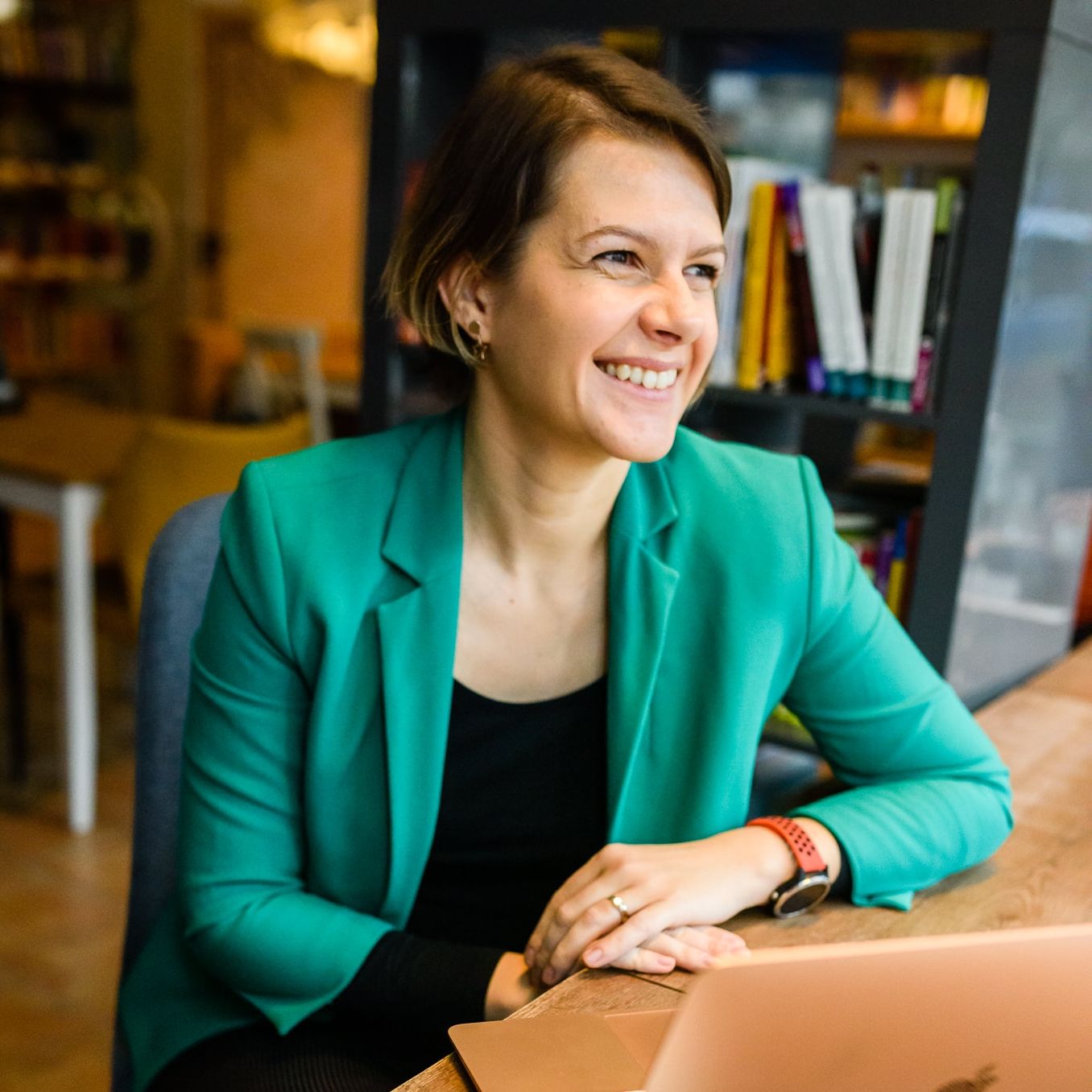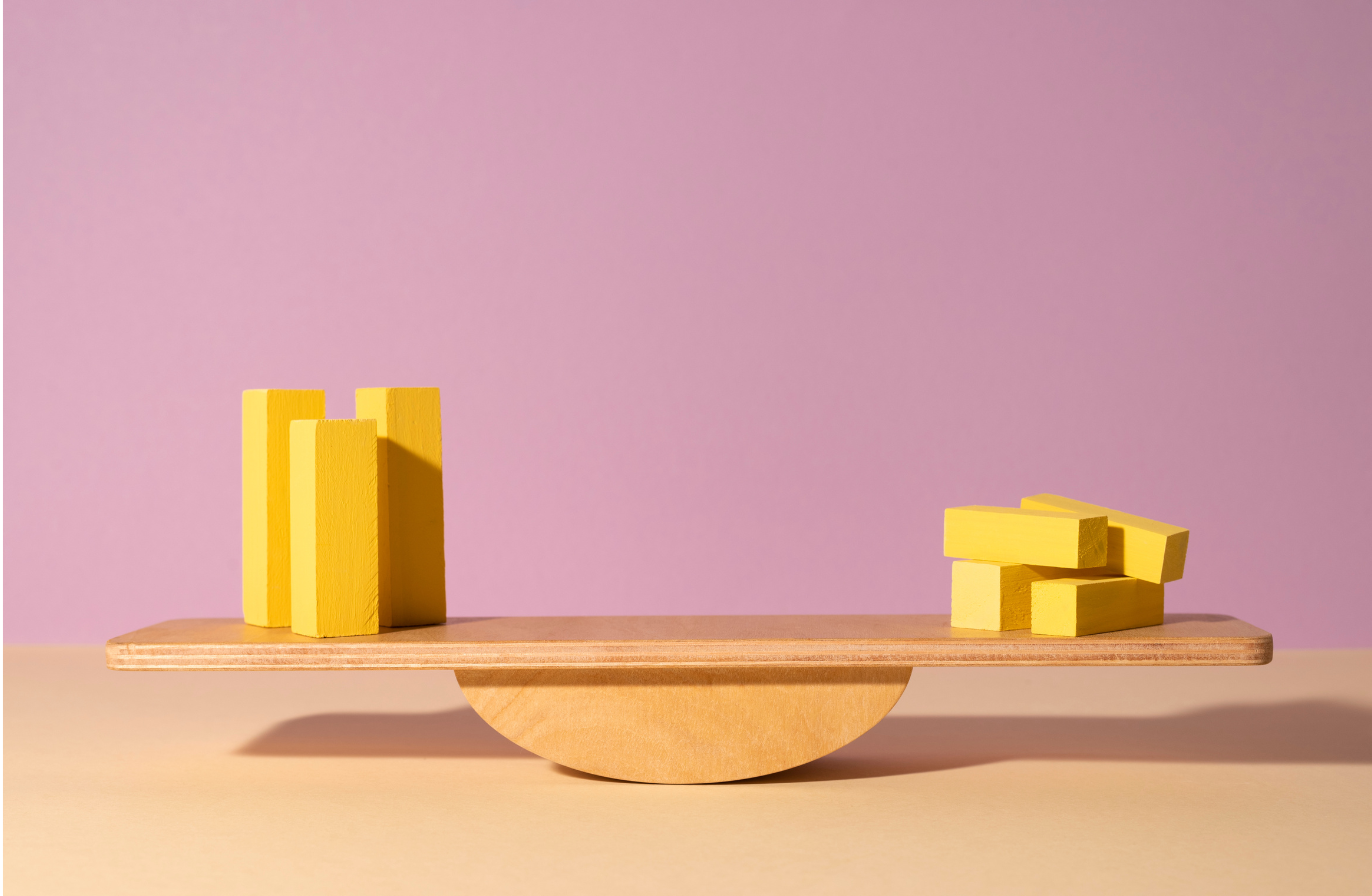How to Discover When Is the Most Effective Time to Boost Content on Social Media - Key Strategies
Discover when is the most effective time to boost content on social media. Unlock strategies that enhance visibility and drive more interactions.
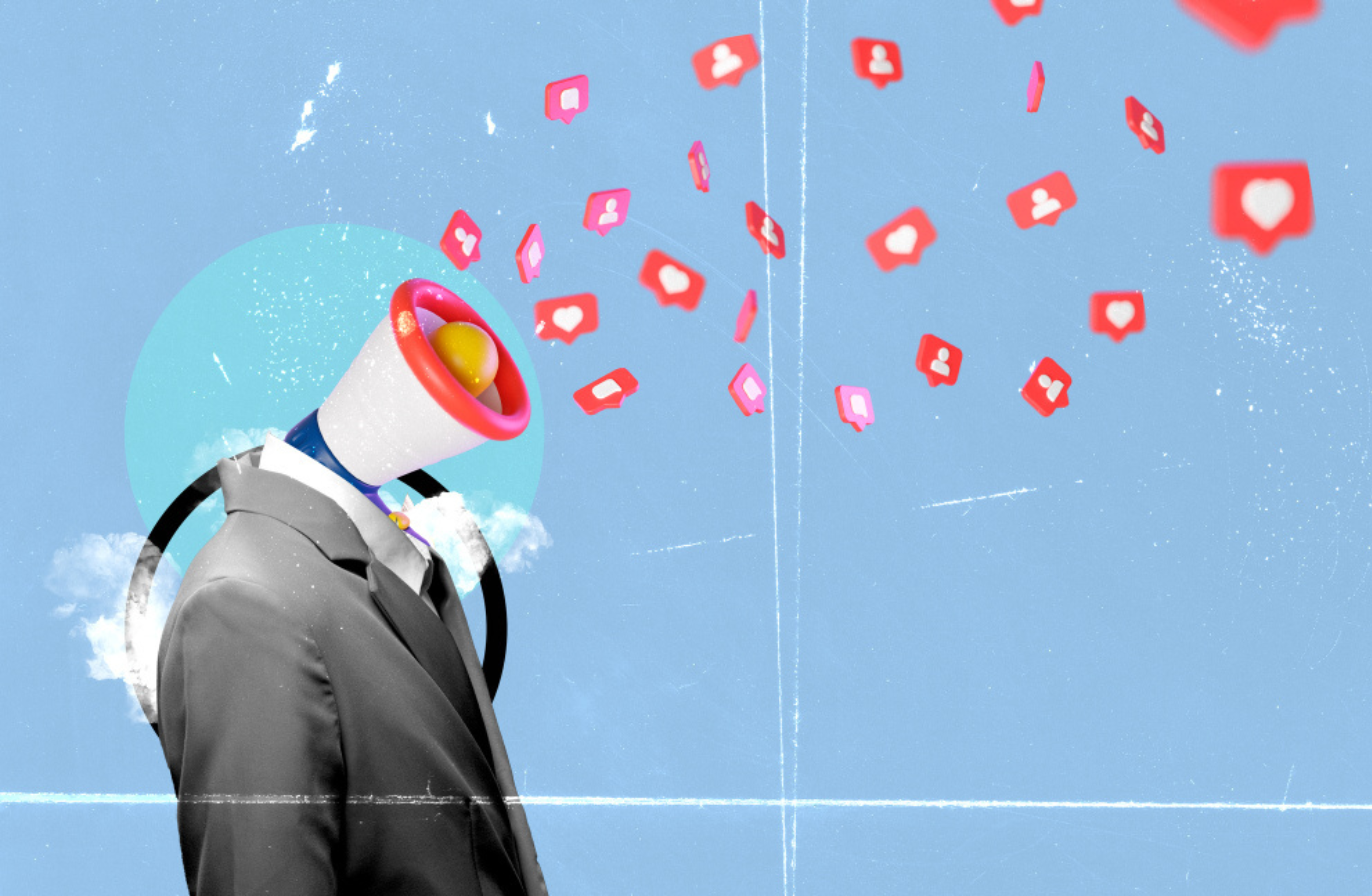
You have figured out the answer to how often to post on social media. You’re now ready with a detailed strategy.
Today, you’re sharing a post you know would bring in great engagement for your business. Maybe it’s a new product, a behind-the-scenes look, or a glowing review.
It gets some likes. But not quite what you hoped. So, you decide to boost it. But even then, it doesn’t take off. Why? Because boosting is all about timing, too.
Hitting ‘Boost’ right after posting isn’t always the smartest move. The question then arises — when is the most effective time to boost content on social media? In this guide, we’ll figure out just how to do that for each popular social network. Let’s get started.
Key takeaways
- Content that performs well organically (high engagement rate, CTR, or reach) is more likely to succeed when boosted.
- Timing matters. Boost when your audience is active — mornings on LinkedIn/Facebook/Twitter, afternoons on TikTok, and late mornings on Instagram.
- Delay boosting unless the content is time-sensitive; early boosts are best for flash sales or live events.
- Use data tools like Socialinsider to spot top-performing posts before spending on boosts.
- Test and track. Split boosts across time slots, measure ROI, and refine based on what consistently works.
Understanding how boost algorithms work in 2025
Let’s first understand what happens when you click “Boost” on social platforms. Which type of audience does the algorithm show your post to? How many more people does it help your brand reach?
How social platforms distribute boosted content
When you boost a post on platforms like Facebook or Instagram, it doesn't immediately reach everyone. Instead, the platform's algorithm first shows it to a small, targeted group to gauge engagement.
If this initial audience interacts positively, through likes, comments, or shares, the algorithm then extends the post's reach to a broader audience.
It’s not just the engagement that these algorithms consider. Here are three other factors they take note of:
- Content type: Certain formats, like videos or carousels, may be favored.
- Relevance: The algorithm assesses how relevant the content is to the targeted audience.
- Historical page/account performance: Pages with consistent engagement and positive feedback are trusted more. A low-quality score (due to negative feedback or misleading content) hurts distribution.
In summary, boosting isn’t a magic button. You need to set up your boosted content for success. One way to do that is by getting the time right. We’ll get into that in detail in the following sections.
What is the relationship between initial organic performance and boost potential
Ever wondered why some boosted posts perform better than others, even with the same social media budget? The secret often lies in how the content performs before you even boost the content.
Most social platforms don’t treat every boost equally. If your post already shows strong organic engagement, like likes, comments, shares, and saves, it signals to the algorithm that people find it relevant. This increases the chances your boost will perform well.
We recommend analyzing your content’s reach and engagement before boosting that content. That’s because platforms use early signals to decide how much additional reach your paid boost deserves.
If a post flops organically, boosting it may just waste budget. On the other hand, high-performing organic posts often get more favorable delivery and stronger results.
To quickly identify your top posts across different platforms, you can use tools like Socialinsider.
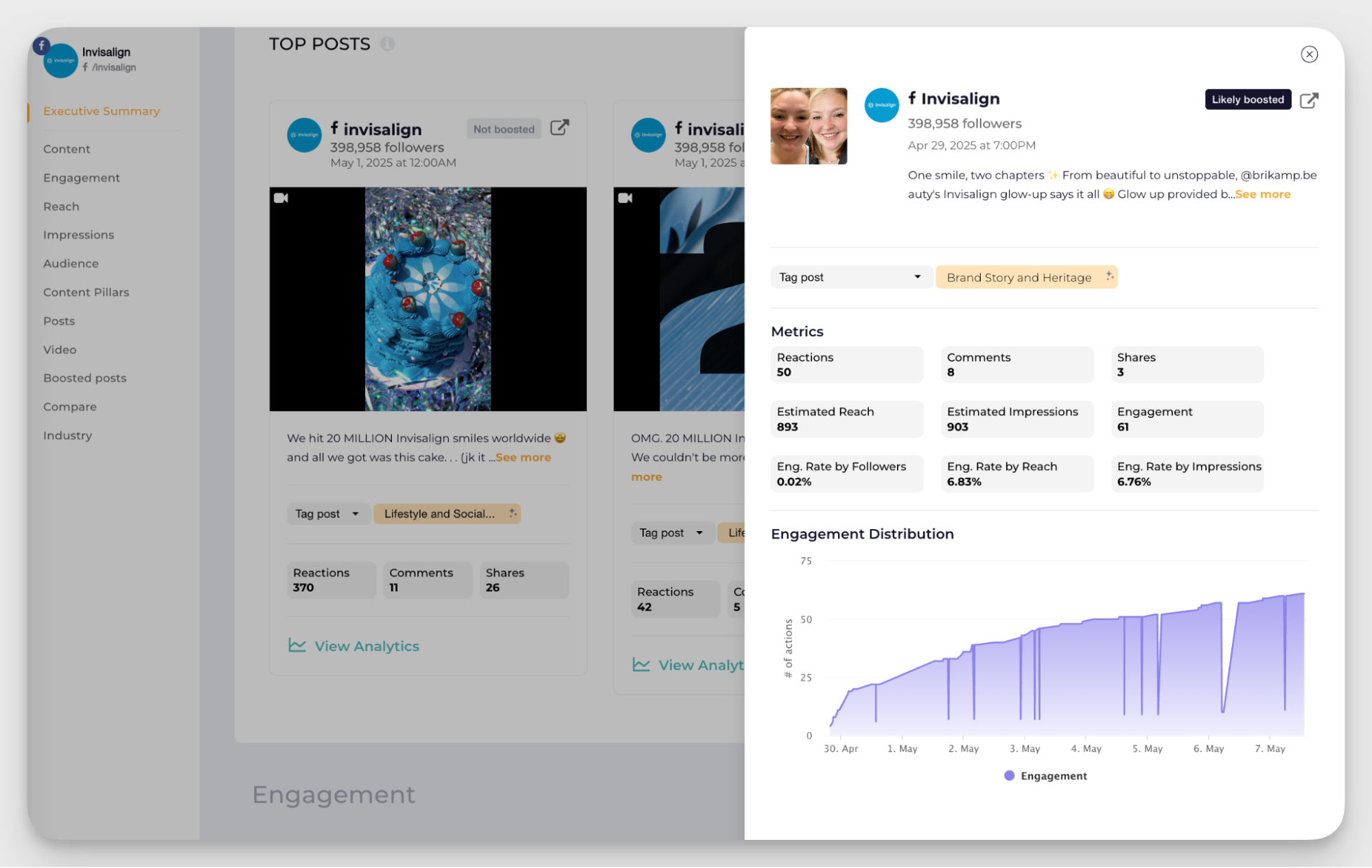
Based on this analysis and how recent the content is, you can then invest in what will give you the most bang for your buck.
How audience behavior influences boosting timing and content
Your audience’s behavior and characteristics can help you plan your content boost and determine its success. For example, people’s online habits differ across time zones, so timing your boost to when your audience is most active is crucial. What’s prime time in one region might be late night in another.
Demographics also play a big role. Teenagers tend to scroll at different hours than working professionals, influenced by their daily routines and lifestyles.
Industry variations matter, too. A restaurant’s boost might perform best around meal times, while a B2B company may see more engagement during weekday work hours.
Ignoring these patterns can waste your budget by showing posts when people aren’t online or interested. To get the best results, we recommend understanding your social media target audience and tailoring your timing and content to fit their unique rhythms, preferences, and schedules.
The ideal boost window: how to time your promotion for maximum impact
Your strategies for boosting content are ready. But when exactly do you press that button? Let’s find out what the secret is to boost your best-performing content.
Early vs. delayed boosting
The timing of when you boost a post can impact its performance. Early boosting means promoting content right after it’s posted. This can help build quick momentum, especially during time-sensitive campaigns like flash sales or live events. For example, an event promotion might be boosted immediately to drive participation fast.
On the other hand, delayed boosting involves waiting to see how a post performs organically. If it gains traction (lots of likes, shares, or comments), boosting it can amplify that success. For instance, a behind-the-scenes video performing well on its own can be boosted a few hours later to reach a wider audience with proven appeal.
When not to engage in early boosting?
- The content hasn’t been tested.
- It is evergreen content that doesn’t need immediate visibility.
When not to engage in delayed boosting?
- The post is tied to a time-sensitive offer or event.
- You need quick visibility for a campaign with a tight deadline.
Signs your content is ready for promotion
How do you know when your content is ready for a boost? Look for signs that it’s already doing well on its own. Here’s a quick checklist.
- Strong engagement: Lots of likes, comments, shares, or saves.
- High reach: It’s spreading beyond your usual followers.
- Positive feedback: People are responding well in the comments.
- Good watch time: For videos, people are watching most or all of it.
- Click-throughs: You’re seeing link clicks or profile visits.
- Shares in DMs or stories: It’s sparking conversation.
- Saves/bookmarks: Audiences want to return to it later.
You can use analytics tools like Socialinsider to get a quick peek into content that matches this checklist.
Here’s how.
- Add your profile to the dashboard
- Go to the Posts section
- Select the time period for when you want to pick content to boost
- Sort by relevant metrics like engagement, shares, or all reactions.
All your top-performing content will be available for shortlisting.
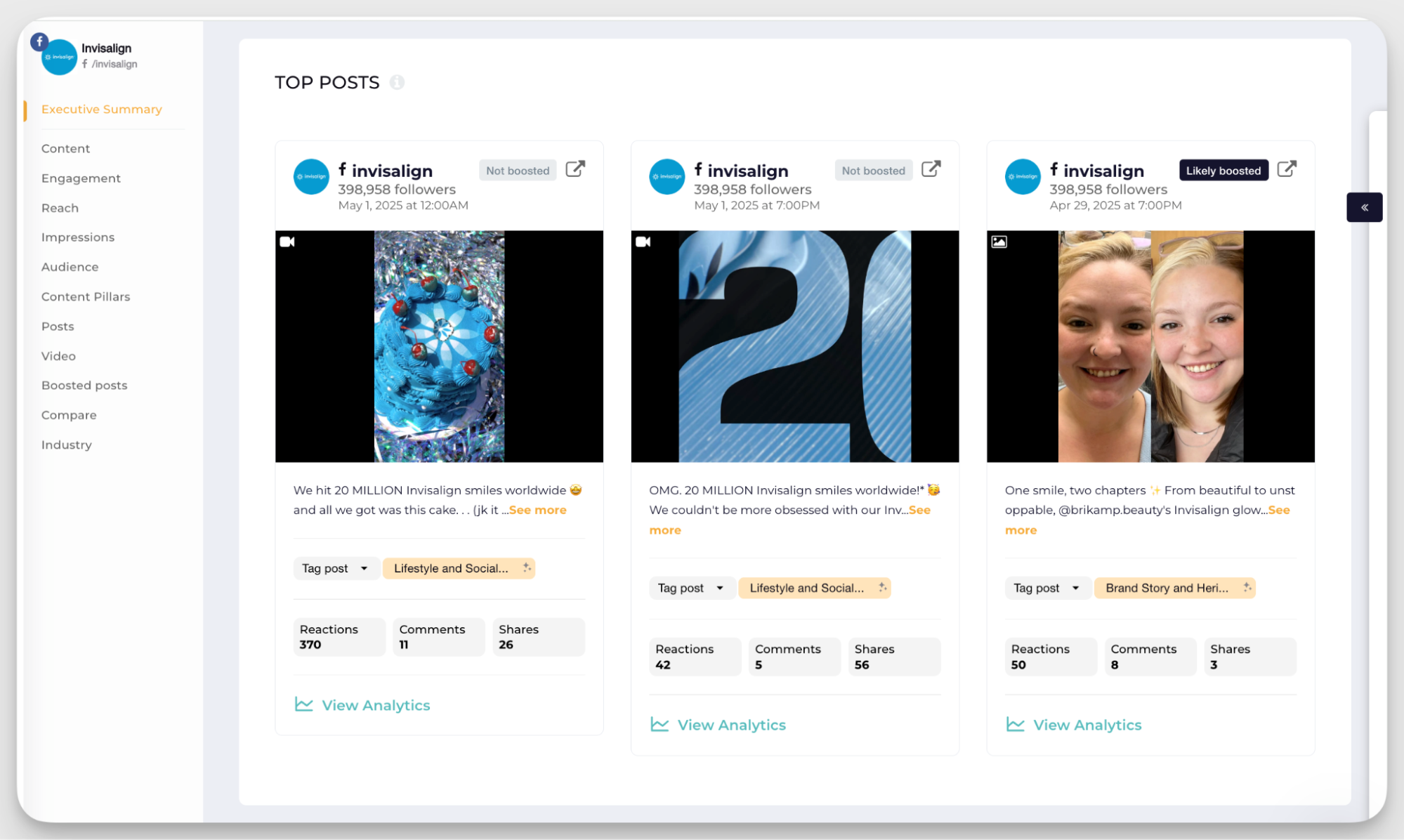
Use performance triggers instead of fixed schedules
Boosting on a fixed schedule can miss the mark. Audiences don’t always behave the same way every day. That’s why using performance triggers is smarter. These signals include high engagement, strong reach, or lots of shares.
For example, if a post suddenly gets more likes and comments than usual, that’s a trigger — it’s gaining momentum. Boosting it then helps you ride the wave.
Performance-based boosting is flexible, efficient, and more likely to deliver results. Reason? You’re not guessing. You’re reacting to what’s working in real time.
Platform-by-platform boost timing guide
Which is the optimal boosting time for social media content on each network? Can you follow platform-specific strategies to help your boosted content go viral? Let’s run down these questions for each platform.
According to a survey of 1 million social posts conducted by Buffer, the best time to post on LinkedIn is between 7 a.m. and 4 p.m. on weekdays. This is in part because LinkedIn is heavily used by working professionals, and engagement tends to drop off when workdays end.
While this does not give us an exact idea of when to boost your content, it signals that boosting on weekdays may be a better bet.
You should also avoid boosting late in the day, as the post may not get much reach.
Here are some strategies for effective content boosting on LinkedIn:
- Boost thought leadership posts that spark real conversations. Look for high comments and industry engagement.
- Promote content with above-average click-through rates. A strong CTR means your message is landing.
- Use LinkedIn analytics to spot content outperforming your usual metrics. Look for 2X your average engagement.
- Boost 6-24 hours after posting, once you’ve seen early performance trends.
According to the same survey, Instagram reach tends to build from 6 a.m. on weekdays, picks up around 11 a.m., and reaches its peak at 3 p.m. Surprisingly, reach tends to dip over the weekends, with Sundays showing the worst dip in post performance.
This means the best time to post on Instagram is on weekdays, especially on Mondays and Fridays.
Here are some best practices to shortlist your content on Instagram and the ideal time to boost it:
- Boost reels with high retention and replays. If users are rewatching, it’s entertaining and may get viral with a boost.
- Elevate Stories with high tap-back and reply rates. This is because tap-backs show interest and replies show intent.
- Avoid boosting at night or during low-activity windows. Aim for late morning to early evening, based on when your audience is most active.
When it comes to Facebook, early morning posts, especially at the start of the week, get great engagement. This engagement level rises through mid-morning and slowly tapers off as the day progresses.
Sunday is again the quietest day on the platform, and Saturday isn’t far behind in this trend.
Here are some quick tips for selecting content and time for a promotion on Facebook:
- Boost image posts with high reach but low clicks. Use Page Insights to spot images catching attention but not driving action. Add a stronger CTA and boost to convert visibility into results.
- Boost posts with high comment counts but few shares. High comment activity shows engagement. Boosting can help it reach more users and turn interest into broader interaction.
- Avoid boosting during low-activity times. Use Facebook's audience activity data to boost when your followers are active.
X (Twitter)
If you’re looking to catch more attention on your tweets, target the morning window. Posts that are shared before lunch tend to perform well on X. Also, the middle of the week is one of the best times to post on Twitter.
Below are three best practices for choosing and boosting content on X.
- Boost tweets with a high engagement rate but low impressions. If a tweet performs well with limited reach, boosting can scale its impact.
- Promote threads with high average read time and strong replies. Use X Premium Analytics or third-party tools to measure dwell time. Threads that hold attention are ideal for promotion.
- Avoid boosting outside peak engagement windows. Use the above data and complement it with your audience's active time to find the right window.
TikTok
TikTok is one platform that gets good engagement on Sundays as well. Even mid-to-late week seems to gather great traction.
When it comes to timings, the best times to post on TikTok are when engagement starts picking up in the early afternoon.
Here are some tips on choosing content and boosting it on TikTok.
- Boost videos with high watch time and video completion rates. If your video has an average watch duration of 75%+, it’s holding attention, making it perfect for boosting.
- Boost videos with high saves and profile visits. These are signals of deeper interest. Use them to identify videos worth pushing to convert passive viewers into followers.
- Promote niche content that outperforms your average engagement rate. If a video on a specific theme beats your typical likes/comments per view, it’s resonating.
- Avoid boosting content with low retention or high early drop-off. Even if views are high, it likely won’t scale well.
Content performance indicators: when to boost vs. when to pass
Instead of randomly choosing content for promotion, here’s how we use our tool, Socialinsider, to make that decision strategically.
Recognize high-potential content
We already know that content performing well has a higher probability of success when boosted. But instead of manually scrolling through your content, add your profile to Socialinsider.
Go to the ‘Engagement’ tab. See which days in the past week or so have brought huge engagement.
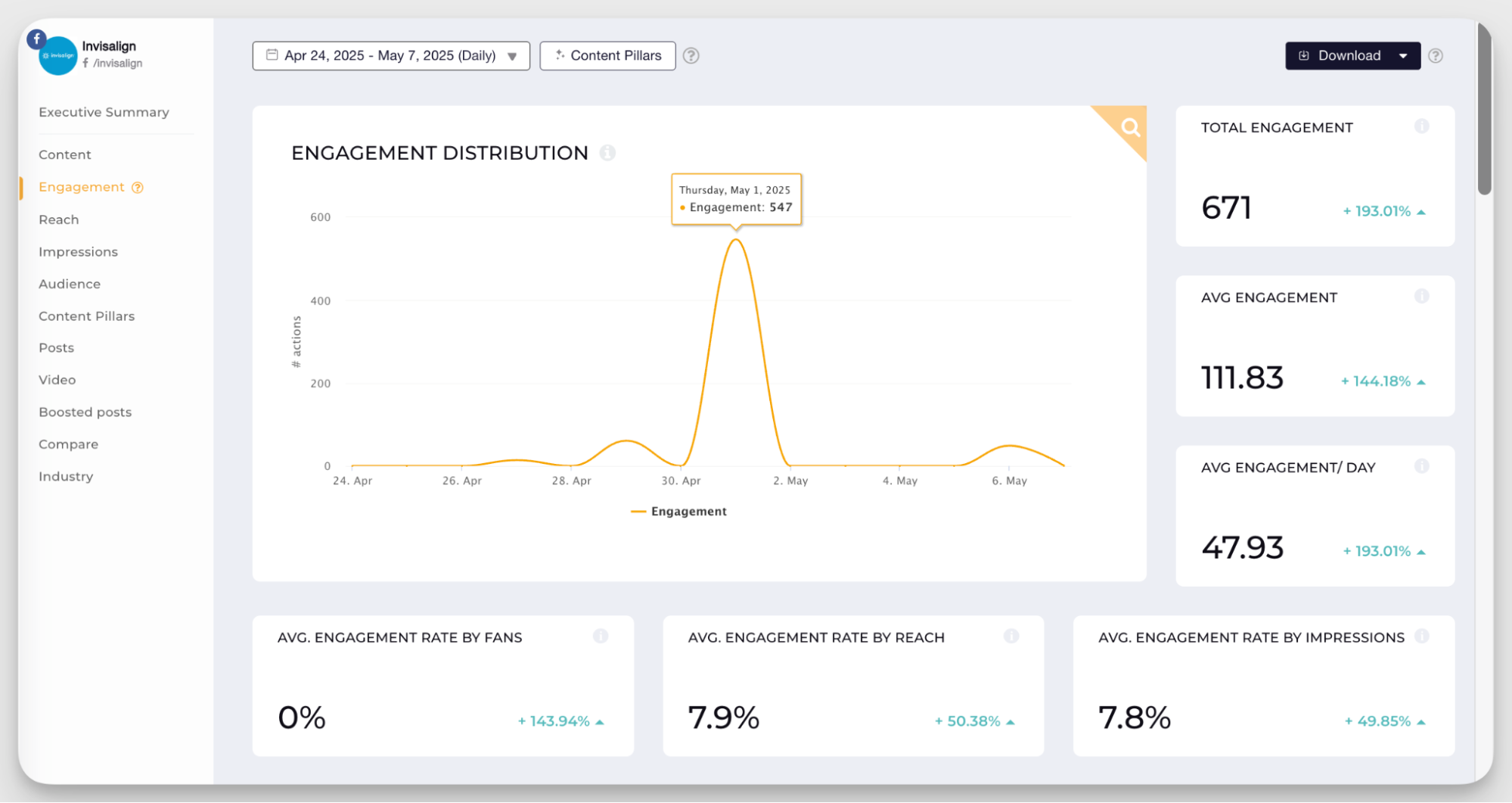
Once you click on that uptick, a dialog box will open on the far right showing you the content that brought this engagement.
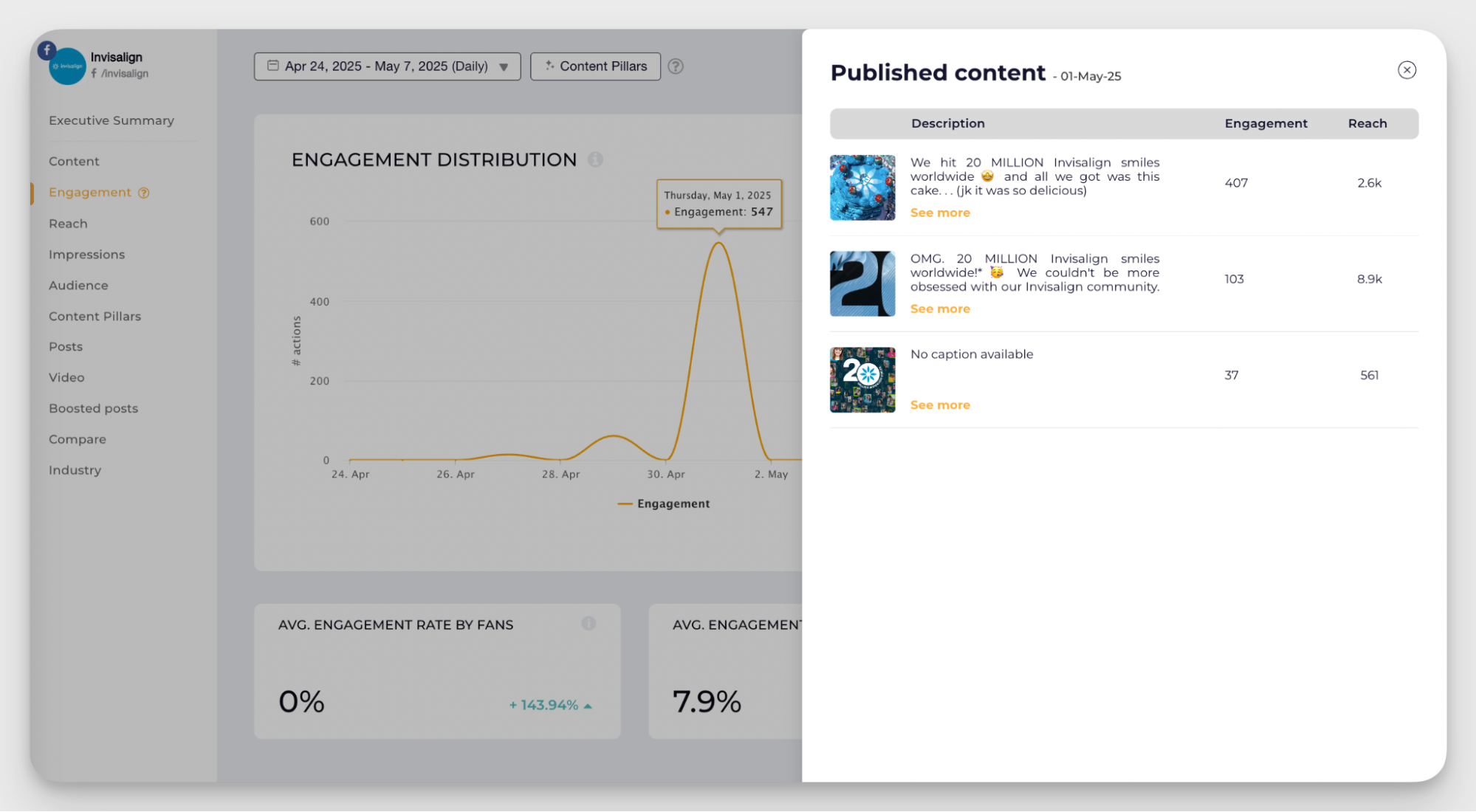
If it matches the checklist we have already gone through for each platform, you can shortlist it for promotion.
Warning signs content won’t perform well when boosted
In the Content tab in Socialinsider, you’ll see both your top-performing and least-performing content.
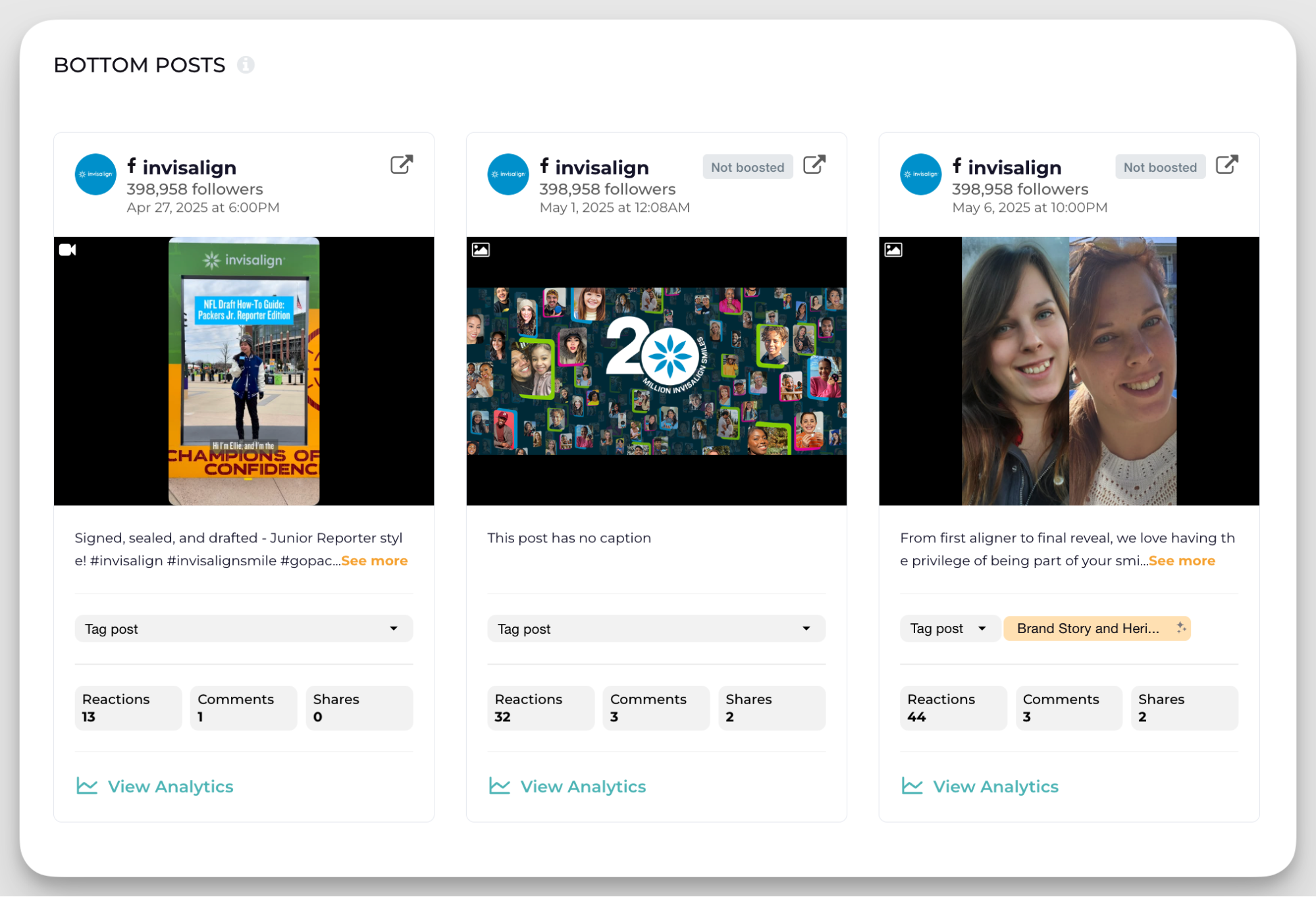
Most brands avoid boosting their low-performing content. We recommend the same, but here's an exception that you can consider - for new product or service launches, even if the content hasn’t picked up organically, boosting can create initial awareness and visibility in front of a targeted audience.
Use initial engagement metrics to predict boost success
Below is a list of initial engagement metrics you should consider for content boosting on social media:
- Engagement rate: If the ER (likes + comments + shares ÷ reach/followers) is higher than your average, it's a strong signal that the content is resonating.
- Click-through rate (CTR): A high CTR shows that your hook (caption + visual) is working. If people are clicking early, boosting can drive more conversions or traffic.
Budget optimization: how to maximize ROI
You’re shelling out money for your boosted content and a lot of other marketing activities. How do you ensure that the ROI on boosted content is worth it? One way is to make sound decisions around budgeting and timing. Here’s how.
Focus on dayparting strategies
While we have already talked about timings, here are four additional dayparting strategies to get the highest ROI from your content boost.
- Split test different time blocks. Run the same content boost across multiple dayparts to find which delivers the best cost-per-result. Optimize based on real-time data.
- Choose based on audience behavior. B2B audiences often engage more during work hours (Tues-Thurs), while B2C content may perform better evenings or weekends. Match your schedule to your audience’s routine.
Check for competitive timing
Ever feel like your content gets buried in a flood of posts? That’s often because everyone’s boosting at the same time. Try this instead. Boost when your competitors are quiet.
For example, if most brands in your niche post on a certain day, test boosting on another high-engagement day in the week.
Less noise makes your content stand out more.
Choose between weekends and weekdays
Except for TikTok, most platforms go a little silent on weekends. But remember, those timings were more for when to post than when to boost.
Weekends might have lower overall activity, but also less competition in the feed, making it easier for your promoted content to stand out. On the flip side, weekdays often bring higher engagement rates, especially during work breaks or commutes.
The best approach? Look at your own data for your organic content as a starting point, using a tool like Socialinsider.
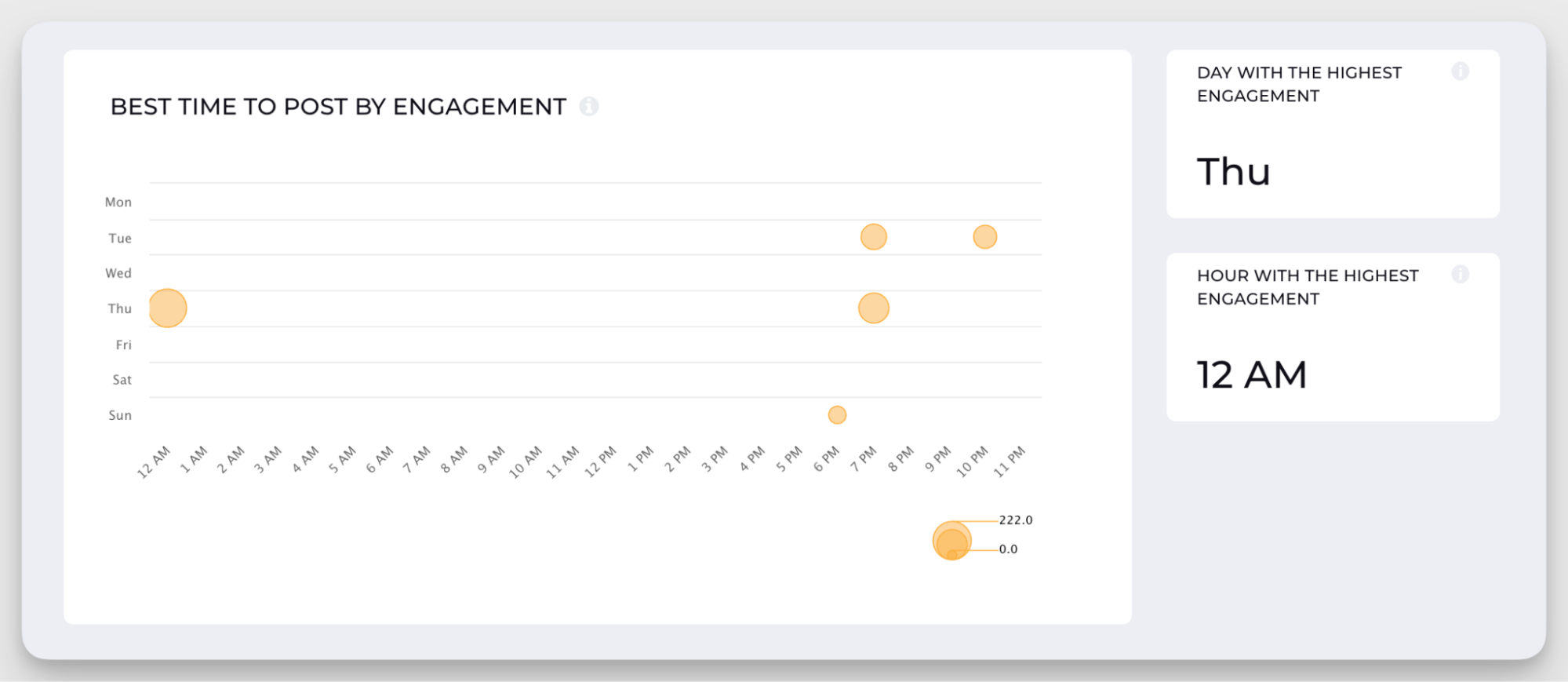
Measure and analyze boost timing effectiveness
Here are two ways to measure your timing effectiveness when you decide to boost your social media content.
Set up tracking to isolate timing as a performance variable
To isolate timing as a performance factor, build a consistent tagging and reporting system across your boosted posts. Every time you run a promotion, log the date, time of day, platform, and performance metrics in a tracking sheet or dashboard.
Group similar content types, like videos, carousels, or links, and compare their performance across time slots. For example, track if carousel posts promoted on weekday evenings drive more link clicks than those boosted in the morning. Also, check if everything else — audience, budget, creative, and duration was the same.
Over a few weeks, patterns will emerge, highlighting which timing windows give you the best cost-efficiency.
Utilize A/B testing methodologies
To use A/B testing to analyze boost timing, start with a single piece of content or two nearly identical versions (same message, creative style). Split your budget equally and run the boosts at different times. For example, one in the morning and one in the evening. Keep all other variables constant (audience targeting, budget, placement, and duration).
Use platform tools or manual split-testing with clear naming. Track key metrics like reach, engagement rate, CPC, and conversions. For example, you might test a product reel on Instagram at 9 AM and again at 7 PM. If the evening boost delivers higher engagement at a lower cost, you’ve identified a more effective time slot.
Repeat this process across different days and formats to build a data-backed timing strategy for your future social media boosting efforts.
Mistakes to avoid when boosting content
Before you boost your content, ensure you are not making these mistakes.
Boosting too soon or too late
Timing is everything when it comes to content promotion. Boosting a post too early, before it has a chance to gain organic traction, can waste budget on content that might not resonate. On the flip side, boosting too late means you might miss the window when your audience was most engaged.
One-size-fits-all timing across platforms
Each social media platform has its own rhythm. What works on Facebook might not perform the same on Instagram or LinkedIn. Boosting content at the same time across all channels ignores platform-specific behavior patterns and user activity.
For instance, LinkedIn audiences are often more active during weekday mornings, while Instagram might see higher engagement in the evenings or weekends. Tailoring your boosting strategy to each platform’s peak activity times can significantly improve ROI.
Ignoring performance data
If you’re not looking at your social media metrics before hitting “boost,” you’re flying blind.
Engagement rate, click-through rate (CTR), saves, and shares — these metrics offer a clear signal of which content deserves a push. Boosting a post simply because it “feels right” isn’t a strategy; it’s a gamble.
Let the data guide your decisions so you can invest in content that’s already proving its worth.
Final thoughts
The most effective time to boost content on social media may not be universal. It may differ from brand to brand based on its audience and goals. While trends offer guidance, true performance comes from watching your own data.
Focus on timing that aligns with strong engagement signals, audience behavior, and low competition periods. Don't boost just because the clock says so. Boost when your content is ready, and your audience is listening. Over time, your metrics will reveal clear patterns. The more you track, the smarter your boosts become.
Want to pinpoint the perfect boost timing for your brand? Let Socialinsider help you dig deeper into your data. Get started with a free trial today.
Analyze your competitors in seconds
Track & analyze your competitors and get top social media metrics and more!
You might also like
Improve your social media strategy with Socialinsider!
Use in-depth data to measure your social accounts’ performance, analyze competitors, and gain insights to improve your strategy.


